Cannondale’s Supersix Evo Is a Near-Perfect Blend of Aero and Lightweight
THE 4TH GENERATION SUPERSIX EVO GETS MUCH CLOSER TO FULL AERO BIKE PERFORMANCE WHILE STILL MANAGING TO SHAVE A FEW GRAMS.
The Takeaway: Cannondale‘s legendary SuperSix Evo road racing platform gets updated to be lighter, more aerodynamic, and easier to work on than the previous generation.
- No more BB30! Cannondale’s latest bike has a BSA threaded bottom bracket.
- Geometry remains unchanged from the previous generation of the Evo.
- While the performance is incredible, the new aero seat post gives a slightly harsher ride feel than before.
SuperSix Evo, Gen 4
Cannondale’s newest SuperSix Evo is the fourth generation of the Connecticut-based brand’s well-regarded, top-tier road racing bike. In contrast to how different the previous model was from what came before it, the new Evo presents more of an evolution than a total redesign. The overall silhouette of the SuperSix Evo largely remains unchanged. The dropped seat stays, the gently sloping top tube, and the truncated airfoil tube shapes all carry over from the third generation into the latest version.
The overall appearance of the new bike looks very similar to the outgoing one. While I was testing the new SuperSix Evo, speculation about it started online based on some leaked photos from the Cannondale-sponsored EF Education-EasyPost team training camps. Yet, only one person noticed the bike I was riding for weeks wasn’t the current production variant.
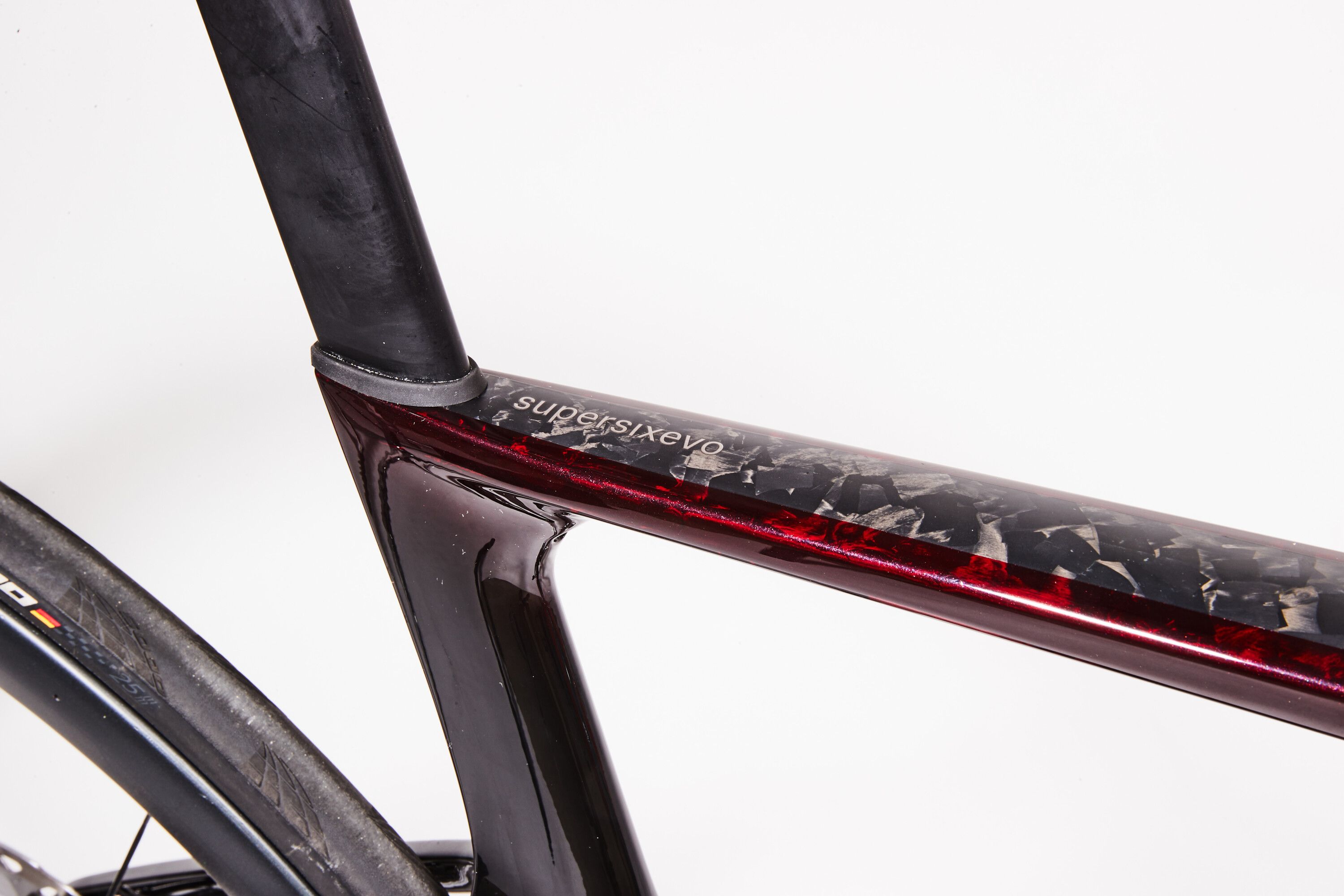 Many of the changes to the Evo were made to boost the bike’s aerodynamics. At the front of the bike is a new hourglass head tube that matches with a new fork; that is also deeper and more aerodynamic. The seat tube and seat post also see a redesign. Above the seat stays, the seat tube becomes very narrow and flat front to back, with a new proprietary seat post to match. The seat stays are dropped further to boost comfort and aerodynamics. Below the seat stay junction, the seat tube gets very thin and flat from side to side. This change is designed to add compliance back into the seat tube, counteracting the stiffness of the aerodynamic shaping above the seat stays.
Many of the changes to the Evo were made to boost the bike’s aerodynamics. At the front of the bike is a new hourglass head tube that matches with a new fork; that is also deeper and more aerodynamic. The seat tube and seat post also see a redesign. Above the seat stays, the seat tube becomes very narrow and flat front to back, with a new proprietary seat post to match. The seat stays are dropped further to boost comfort and aerodynamics. Below the seat stay junction, the seat tube gets very thin and flat from side to side. This change is designed to add compliance back into the seat tube, counteracting the stiffness of the aerodynamic shaping above the seat stays.
Despite adding extra surfaces to the frame to boost aerodynamics, Cannondale managed to drop a bit of weight with the Evo. A 4th generation Hi-Mod frame, which used to be Cannondale’s top tier carbon, now weighs 800 grams for a size 56cm painted frame. That’s an impressive 66g drop from the previous generation Evo. Above Hi-Mod now sits Cannondale’s Lab71 lever frame, which is a nod to the companies founding in 1971, and represents the peak of its frame-making ability. These premium-level frames shed an additional 30 grams and bring the weight of a painted 56cm frame down to 770g.
From a numbers perspective, the fourth generation of the Evo takes a big step forward in weight and aerodynamics. The latter is essential for racing, which Cannondale’s engineers designed this bike to do. As much as we love the feeling of riding an ultra-lightweight bike, the reality is that even at very modest speeds (such as ten miles per hour), half of your pedalling effort goes into overcoming air resistance. And air resistance increases exponentially as your speed goes up. These simple facts drove Cannondale to focus on the aerodynamics of the new Evo.
 Compared to its predecessor, the new bike saves just a hair under 12 watts at 50km/h. But there are some caveats to that number: the third generation Evo was tested by Cannondale with its stock 45mm deep Knot wheels, while the new Evo uses a new 50mm deep wheelset. It’s hard to say how many of those saved watts come from the slightly deeper wheelset vs all the other changes to the frame. But Cannondale did test the new Evo with a one and two-piece cockpit (shown on our test bike). Not surprisingly, the single-piece cockpit added up to roughly 3.5 of those 12 watts Cannondale claims the new Evo saves over the older model. Put another way, riders opting for a separate bar and stem only shave about 8.5 watts over the 3rd generation Evo.
Compared to its predecessor, the new bike saves just a hair under 12 watts at 50km/h. But there are some caveats to that number: the third generation Evo was tested by Cannondale with its stock 45mm deep Knot wheels, while the new Evo uses a new 50mm deep wheelset. It’s hard to say how many of those saved watts come from the slightly deeper wheelset vs all the other changes to the frame. But Cannondale did test the new Evo with a one and two-piece cockpit (shown on our test bike). Not surprisingly, the single-piece cockpit added up to roughly 3.5 of those 12 watts Cannondale claims the new Evo saves over the older model. Put another way, riders opting for a separate bar and stem only shave about 8.5 watts over the 3rd generation Evo.
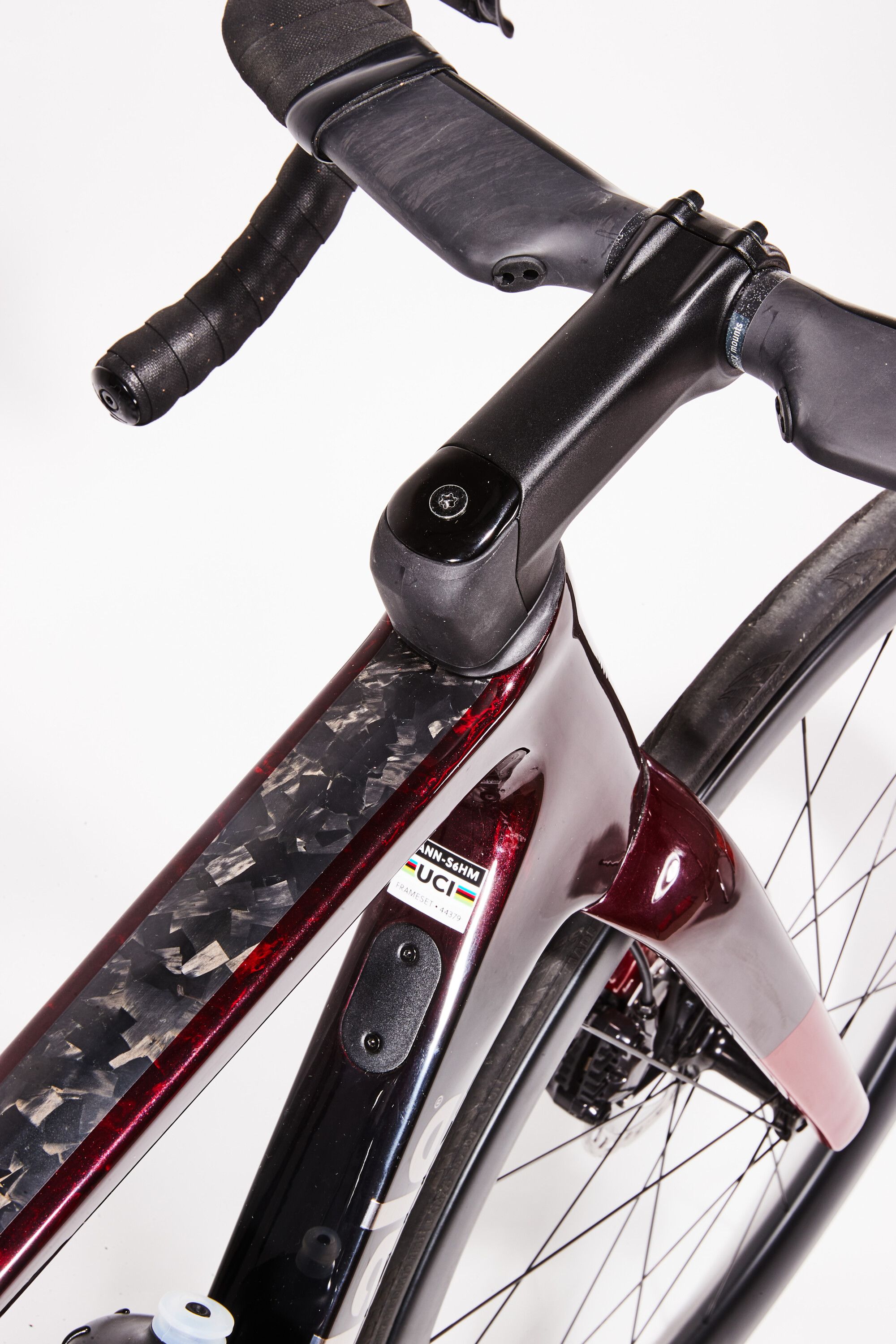 With the new Evo comes a completely redesigned front end and cockpit, which is a good thing. I was not a big fan of the integrated cockpit equipped on the previous Evo. It always struck me as too bulky to pair with an otherwise slender bike. But, I was a big fan of how Cannondale hid the houses, wires, and cables while allowing riders to run whatever handlebar and stem they wanted—and without routing anything through the headset bearings. So while I wasn’t a fan of the looks, the old cockpit was, functionally, one of the better examples of cable integration.
With the new Evo comes a completely redesigned front end and cockpit, which is a good thing. I was not a big fan of the integrated cockpit equipped on the previous Evo. It always struck me as too bulky to pair with an otherwise slender bike. But, I was a big fan of how Cannondale hid the houses, wires, and cables while allowing riders to run whatever handlebar and stem they wanted—and without routing anything through the headset bearings. So while I wasn’t a fan of the looks, the old cockpit was, functionally, one of the better examples of cable integration.
The new cockpit is both good news and bad news for riders and mechanics. The bad news is that hoses, wires, or shift cables now run through the upper headset bearing, which feels like the price we’re all paying for hiding cables these days. Fortunately for riders, that’s the only pain point of the new cockpit design. Visually, the two-piece and one-piece cockpits are now significantly slimmer and sleeker compared to the previous design.
Riders can choose to run cables through the bars and stem or routed externally along the bar, under the stem, and into the frame. The latter setup allows quick and easy swaps of stems or bars to fine-tune the fit. The new frameset is also compatible with mechanical shifting, which has become a rarity on high-end race bikes. But, sadly, Cannondale does not offer the frame in a rim brake variant. The 4th generation of the Evo is now disc brake only.
Cannondale accomplished this cockpit slimming by fitting everything it needed to route past the headset bearing by making a fork with—take a deep breath—a triangular steerer tube. At first, this sounds like one of those wacky Cannondale ideas (like 30mm bottom bracket spindles or single-sided suspension forks,) and maybe it is. But Cannondale understands that no one has much interest in a proprietary stem. To match the new steer tube shape to any standard 1-⅛-inch round stem, they supply two little aluminium pieces that fit into the gaps between the round stem and the triangular steer tube.
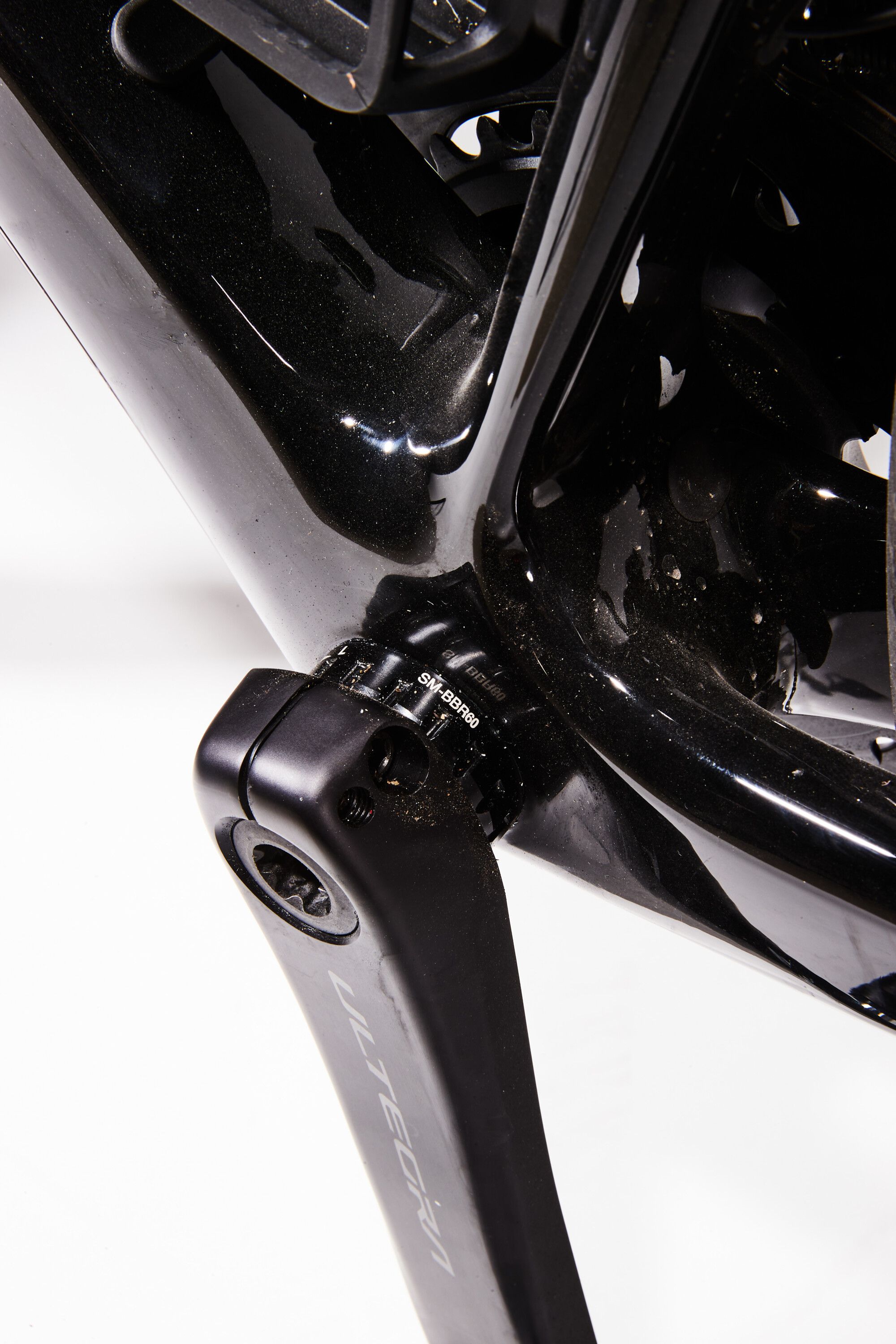 There are also significant changes at the bottom bracket as the new Evo moves to a standard threaded BSA setup from the oversized, press-fit BB30 found on Cannondales since its introduction in 2000. I’m happy to see Cannondale return to proven and easily serviceable bottom brackets on its top-tier race platform. Though, this shift may sadden fans of the lightweight and stiff Hollowgram crankset.
There are also significant changes at the bottom bracket as the new Evo moves to a standard threaded BSA setup from the oversized, press-fit BB30 found on Cannondales since its introduction in 2000. I’m happy to see Cannondale return to proven and easily serviceable bottom brackets on its top-tier race platform. Though, this shift may sadden fans of the lightweight and stiff Hollowgram crankset.
Officially the tire clearance of the new Evo stays the same at a conservative 30mm. Running a 30mm tire leaves a 6mm clearance all around, and depending on a rider’s risk tolerance, a much larger tire will fit without too much issue.
Geometry
The geometry and fit of the new Evo remain identical to its previous version. Cannondale sticks to what it knows works, with most sizes having classic road racing angles of 71-73º for the head tube and 72-74º for the seat tube. Despite the differences, each size Evo has consistent handling across all sizes. Each frame size shares a 58mm trail figure, with only the smallest size deviating slightly to 60mm to ensure riders of various sizes get the same race-oriented performance.
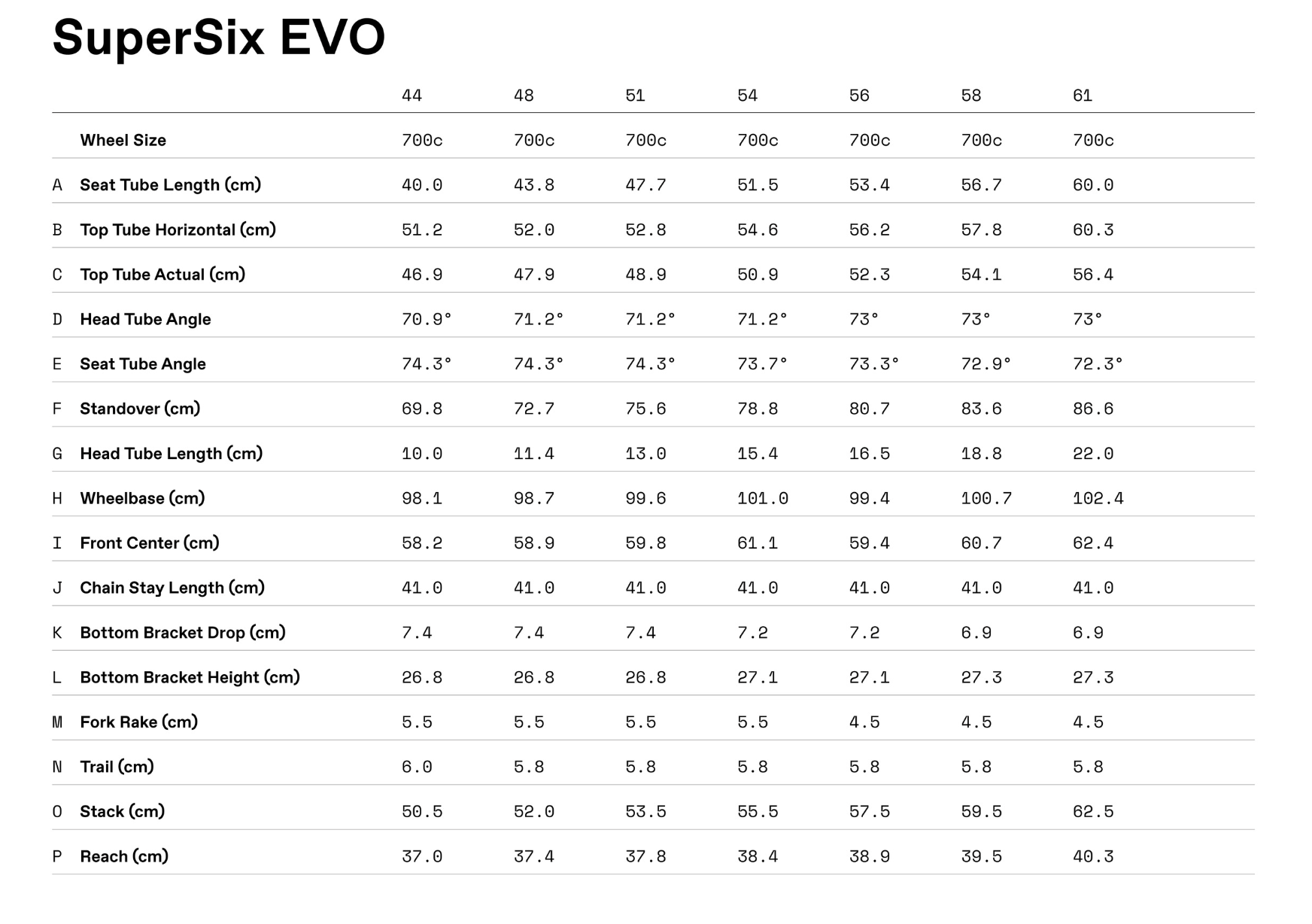 While the geometry details stay unchanged, the size range on offer shrinks by one. Cannondale combined the third generation’s 60cm and 62cm into a new 61cm size, splitting the stack and reach of the old 60cm and 62cm frames down the middle. So instead of eight frame sizes, the new Evo has seven.
While the geometry details stay unchanged, the size range on offer shrinks by one. Cannondale combined the third generation’s 60cm and 62cm into a new 61cm size, splitting the stack and reach of the old 60cm and 62cm frames down the middle. So instead of eight frame sizes, the new Evo has seven.
Pricing and Competition
Pricing on the new Evo is simultaneously absurd yet seemingly reasonable compared to its competitors. Price-conscious riders can purchase a non-Hi-Mod Evo with Ultegra Di2 for R129 000, but the eye-watering Lab71 runs to R250 000 with a 12-speed Shimano Dura-Ace groupset. Cannondale isn’t alone in pricing its halo-level bikes in this range, but that doesn’t make anyone feel better about the price tag – and as more in the range become available, affordability will become less important than the world-tour heritage of the bike.
Ride Impressions
Cannondale took an already excellent race bike, its 3rd generation SuperSix Evo, and made it lighter and more aerodynamic. So it was not surprising that my first impression after riding the new Evo was that Cannondale has a winner here. The overall feel of the bike is super reactive. Like a good race bike, it goes precisely where it’s pointed. It also has the rare ability not only to hold a line through a corner but tighten down the turn seemingly at will. To say that the new Evo handles very well would be putting it mildly.
 What the SuperSix Evo does so well—and what makes it an ideal race bike—is no matter the situation, it encourages you to go faster. The Evo feels natural the moment you clip into the pedals. That ease translates into speed by having the bike simply disappear underneath you. By removing the nagging drawbacks of lesser bikes, the Evo lets you focus on riding fast instead of thinking about the bike’s limitations. Although occasionally, you’ll rip around a turn with such speed that you won’t be able to help yourself but giggle, smile, and think about the Evo for just a moment.
What the SuperSix Evo does so well—and what makes it an ideal race bike—is no matter the situation, it encourages you to go faster. The Evo feels natural the moment you clip into the pedals. That ease translates into speed by having the bike simply disappear underneath you. By removing the nagging drawbacks of lesser bikes, the Evo lets you focus on riding fast instead of thinking about the bike’s limitations. Although occasionally, you’ll rip around a turn with such speed that you won’t be able to help yourself but giggle, smile, and think about the Evo for just a moment.
The SuperSix Evo also is no slouch in a straight line. I didn’t do independent wind tunnel testing to tell you exactly how fast the Evo is, but based on my experience, it feels rapid. Fast aero bikes have a particular sensation best described as a feeling of constant acceleration combined with refusing to let go of momentum. This sensation is not a quantifiable metric, but when a bicycle does it right, it’s felt instantly. In the same way, when you ride a non-aero bike, you feel its absence. The Evo is not a dedicated aero bike but it feels like one.
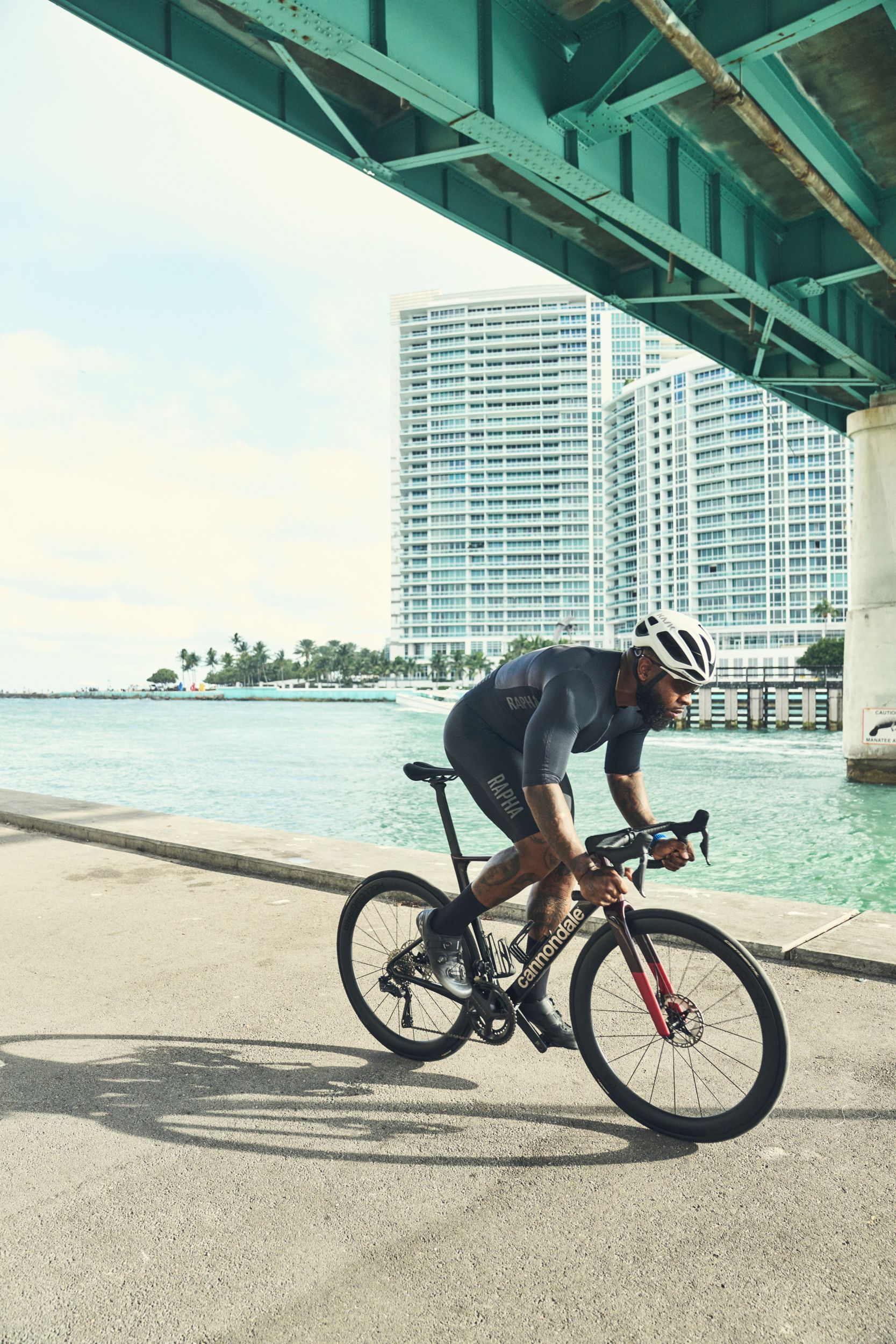 As with the previous generation Evo, the new bike’s uphill performance is excellent. That didn’t shock me, considering the latest version is lighter and seemingly did not lose any of its power transfer. The Evo is aided by a natural feeling out of the saddle, especially on very steep climbs. Even under maximum effort, it never feels twitchy as it rocks underneath you.
As with the previous generation Evo, the new bike’s uphill performance is excellent. That didn’t shock me, considering the latest version is lighter and seemingly did not lose any of its power transfer. The Evo is aided by a natural feeling out of the saddle, especially on very steep climbs. Even under maximum effort, it never feels twitchy as it rocks underneath you.
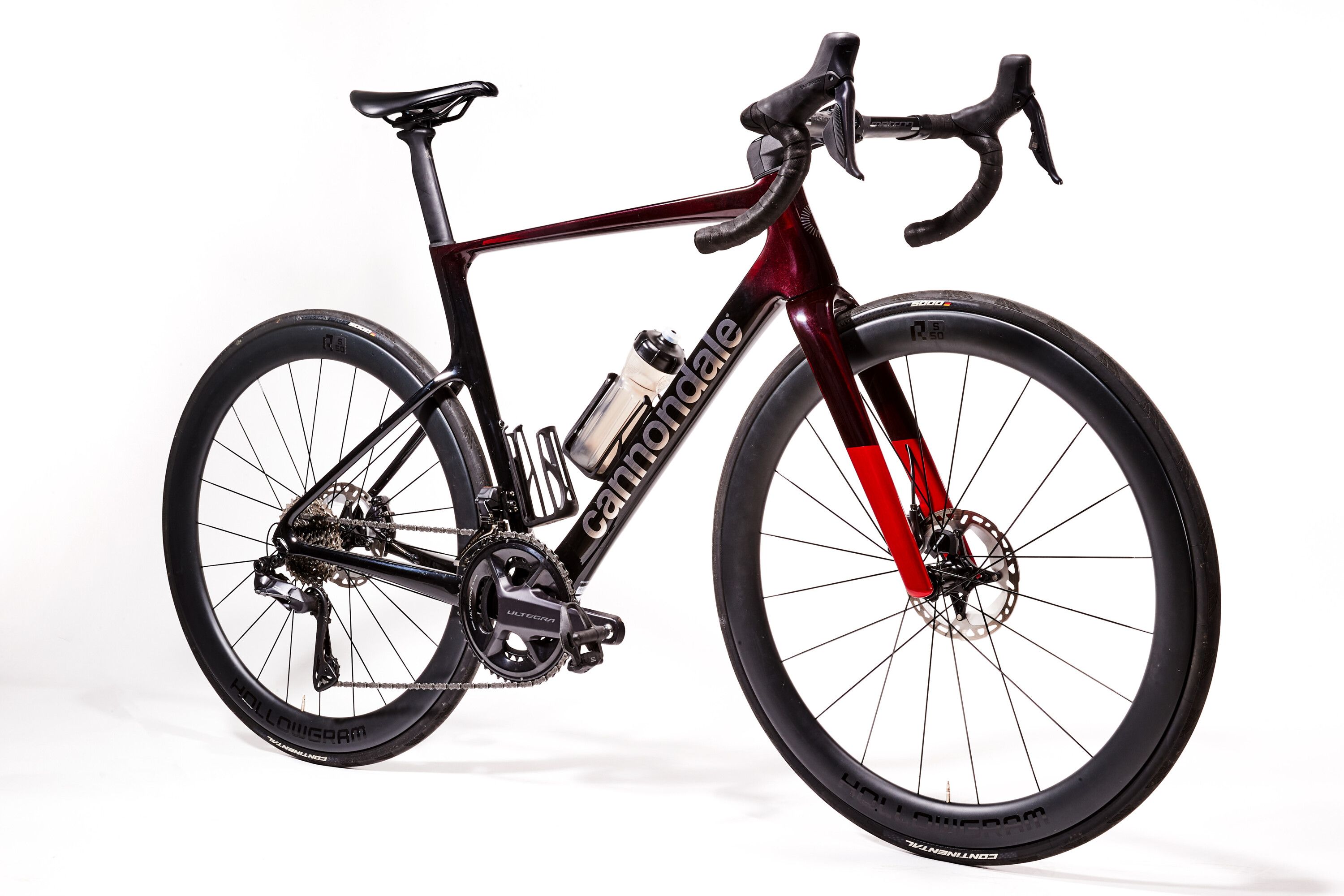 My only criticism of the new Evo is its harsher ride feel compared to the old bike—an unfortunate side effect of the aero-shaped seat tube and seatpost. The stouter fork and headtube also do not help with comfort up front. And I don’t mean to imply that this makes the new Evo bad, just that it rides slightly harsher than the old one.
My only criticism of the new Evo is its harsher ride feel compared to the old bike—an unfortunate side effect of the aero-shaped seat tube and seatpost. The stouter fork and headtube also do not help with comfort up front. And I don’t mean to imply that this makes the new Evo bad, just that it rides slightly harsher than the old one.
The slightly harsh feel shouldn’t be a dealbreaker for riders looking for the best possible race results. Because, like most modern road bikes, the Evo has plenty of room for a larger tire to smooth things out. But ideally, you are buying this bike because your goal is speed. That’s what the SuperSix Evo is for, and it’s very good at it.
More info at www.cannondale.com
READ MORE ON: aero bikes Cannondale New bikes new products race bikes road bikes



